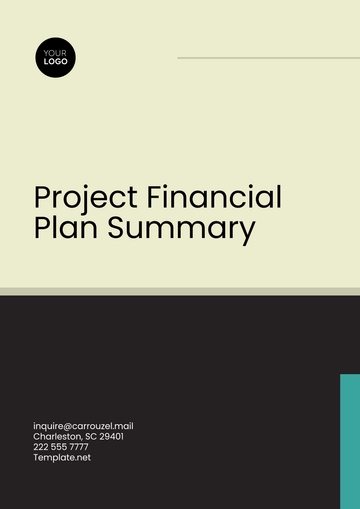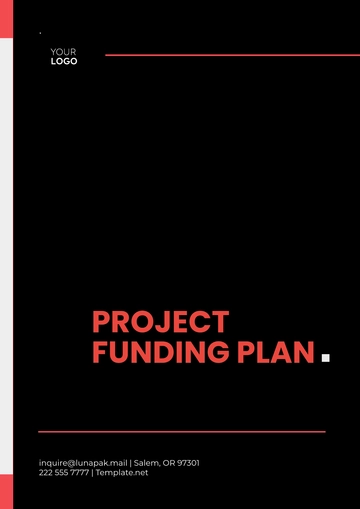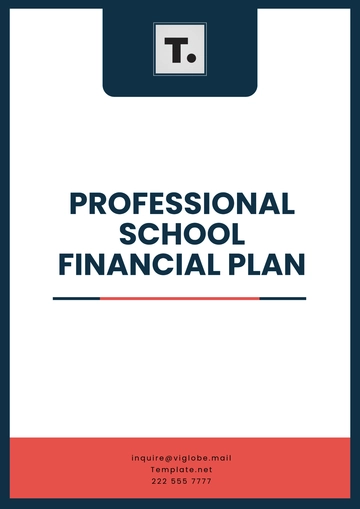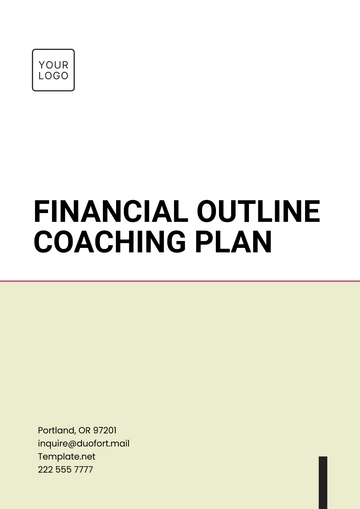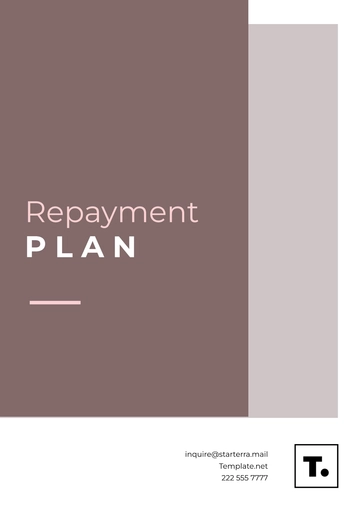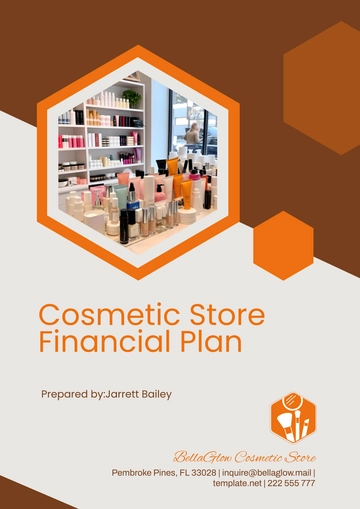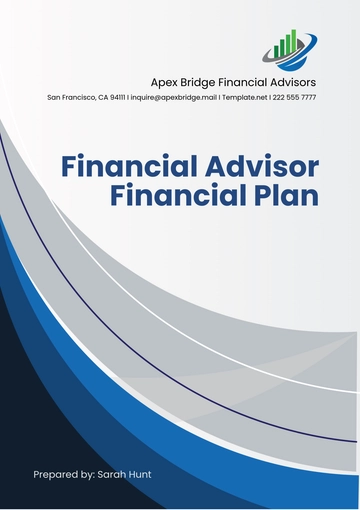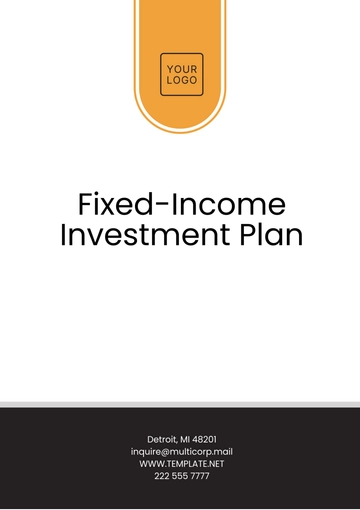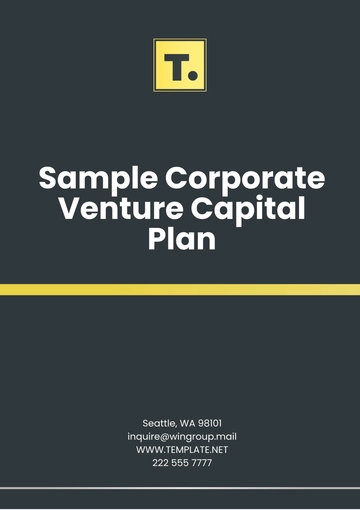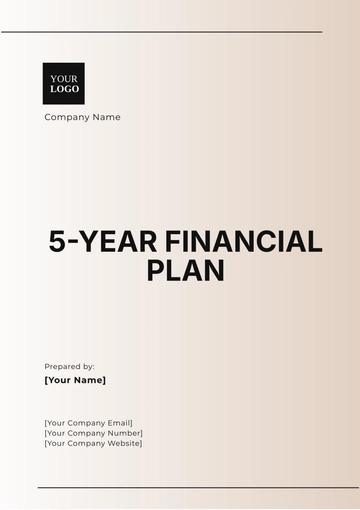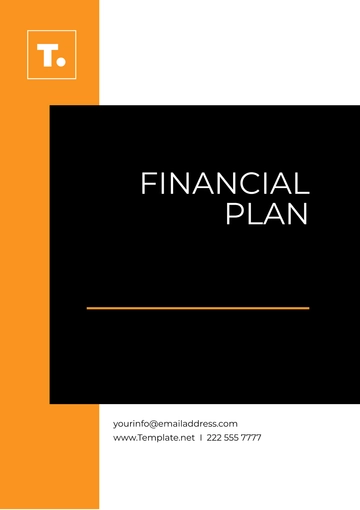Free Long-Term Finance Payroll Plan
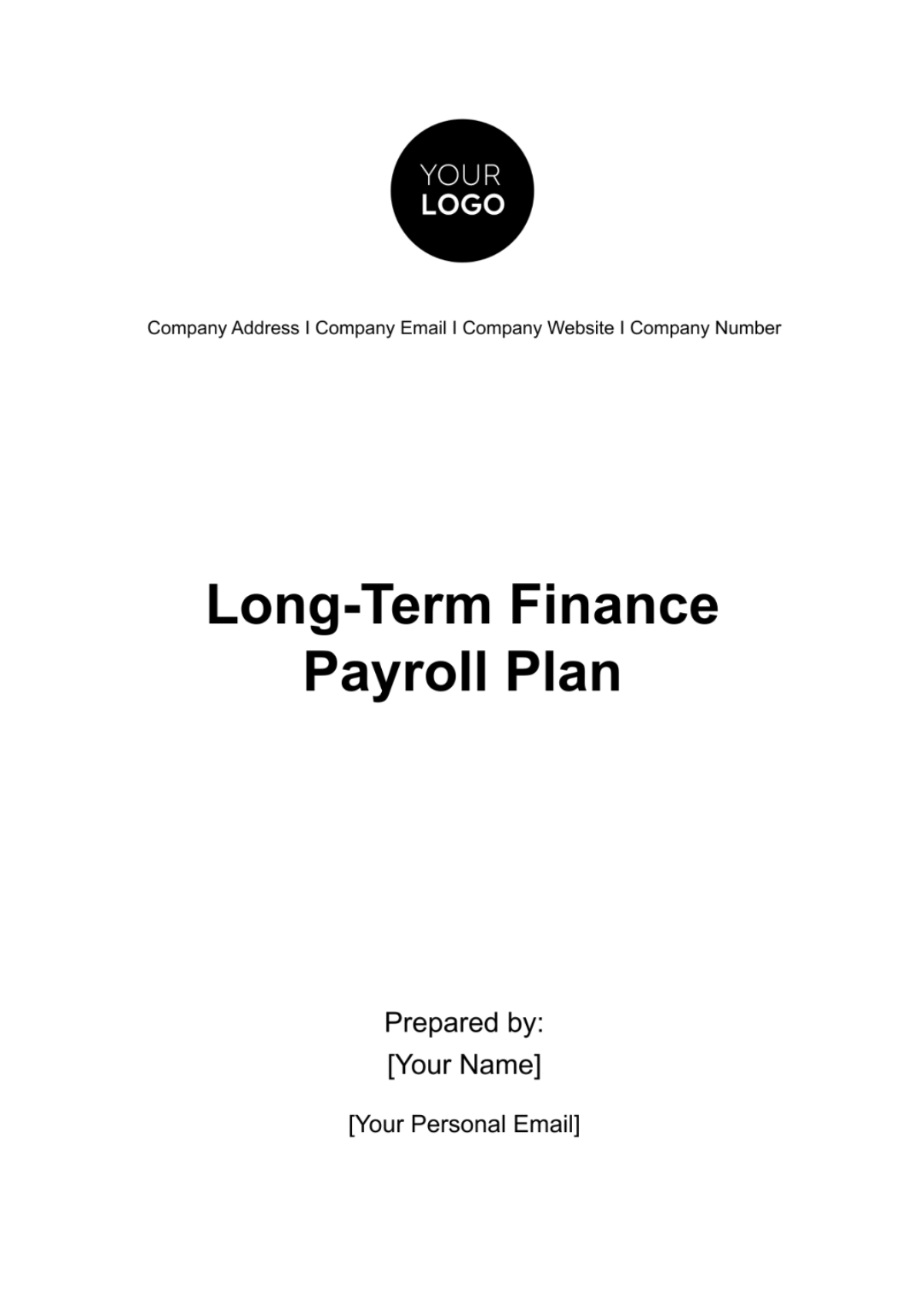
I. Executive Summary
In charting our course for financial resilience and sustainable growth, this plan embodies a strategic roadmap meticulously designed to navigate the complexities of payroll management. It considers comprehensive risk assessment, identifying potential economic, market, regulatory, global, and technological risks. These risks are met with proactive mitigation strategies, ranging from diversification of revenue streams to talent retention programs, ensuring adaptability in dynamic business environments.
The plan is underscored by a commitment to transparent communication, both internally and with stakeholders, fostering a culture of awareness and understanding. Continuous monitoring and evaluation mechanisms, including key performance indicators and regular audits, provide a robust framework for assessing the plan's effectiveness. Trigger points, such as financial deviations or market shifts, prompt swift adjustments for budgetary reallocations and cost-efficiency measures. Altogether, this plan not only safeguards financial stability but also positions our organization for sustained success in an ever-evolving landscape.
II. Organizational Overview
A. Company Profile
In the intricate tapestry of the manufacturing sector, our organization has become a stalwart known for its commitment to operational excellence and innovation. Our journey mirrors a legacy of delivering high-quality products that have set industry benchmarks.
B. Founding Principles
Established on the pillars of innovation and quality, we have embraced a culture that fosters continuous improvement and a commitment to exceeding customer expectations.
C. Industry Dynamics and Competitive Position
Technological Integration
Investing in cutting-edge technologies positions us at the forefront of industry trends, ensuring efficiency and staying ahead of competitors.
Sustainability Initiatives
Our commitment to eco-friendly practices aligns with evolving consumer preferences, enhancing our market position as a responsible and forward-thinking manufacturer.
D. Strategic Objectives
Our strategic objectives that align with our long term goals are:
Production Efficiency
Streamlining operations and adopting lean practices to enhance production efficiency, reduce costs, and maintain a competitive edge.
Market Expansion
Diversifying our market reach by exploring new territories and customer segments, thereby broadening our footprint in the manufacturing sector.
Innovation Culture
Fostering a culture of innovation to stay adaptable to market changes, developing products, and improving existing ones.
III. Payroll Budgeting Framework
A. Methodology
Historical Analysis
Delving into past payroll expenditures, we derive insights to optimize resource allocation, identifying trends that influence future budget considerations.
Market Analysis
Vigilantly monitoring industry-specific salary benchmarks ensures our compensation packages remain not only competitive but also reflective of the industry's evolving standards.
Workforce Projections
Anticipating changes in workforce dynamics goes beyond figures as it involves aligning with skillset demands and diversity requirements to foster a resilient and adaptable workforce.
Technology Impact Assessment
Considering the impact of technological advancements on workforce requirements, ensuring our budget accommodates shifts in skill demands and the potential need for upskilling.
B. Key Budgeting Factors
Inflation Rates
A meticulous analysis of inflationary trends enables us to make salary adjustments that not only maintain but enhance the purchasing power of our workforce.
Industry Trends
Remaining attuned to evolving manufacturing-specific compensation trends allows us to benchmark effectively, ensuring our packages attract and retain top talent.
Workforce Evolution
Aligning budgeting with anticipated changes in workforce structure involves not only quantitative aspects but also considerations for diversity, equity, and inclusion to fortify our organizational resilience.
Global Talent Dynamics
Acknowledging the global nature of talent acquisition, we factor in international talent dynamics, ensuring our compensation strategies remain competitive on a global scale.
Employee Well-being Initiatives
Incorporating budget allocations for employee well-being initiatives, recognizing the profound impact on overall workforce satisfaction and productivity.
IV. Long-Term Financial Projections
A. Revenue Growth Projections
The graph below illustrates our forecast for revenue growth over the next five (5) years:
The data provides a comprehensive outlook on the expected growth trajectory of our revenue. These revenue projections are fundamental for aligning payroll expenditures with the financial capacity of the organization, ensuring a sustainable and balanced approach to long-term financial planning.
B. Payroll Expenditure Forecasts
The table below details our projections for payroll expenditures, considering anticipated changes in workforce size and salary adjustments:
Year | Projected Workforce | Average Salary | Total Payroll Expenditure |
1 | [150] | [$65,000] | [$9,750,000] |
2 | |||
3 | |||
4 | |||
5 |
These payroll expenditure forecasts provide insights into the financial implications of workforce management, aiding in budgeting and ensuring alignment with revenue growth. These projections enable proactive financial planning, fostering resilience, and ensuring the organization is well-positioned for future challenges and opportunities.
V. Employee Compensation Structure
A. Base Salaries
The table below illustrates the breakdown of base salaries for various job roles within the organization:
Job Role | Experience Level | Base Salary |
[Manager] | [Senior] | [$100,000] |
The data showcase the baseline compensation for different roles, considering experience levels. This meticulous categorization ensures a fair and transparent salary structure, aligning with industry standards and internal equity. Establishing this clear compensation structure supports employee satisfaction and engagement, contributing to higher productivity and reduced turnover rates.
B. Performance-Linked Incentives
The table below presents performance-linked incentives based on key performance indicators (KPIs):
Job Role | KPI Achievement | Incentive |
[Manager] | [90% -100%] | [$20,000] |
Performance-linked incentives create a direct link between individual efforts and organizational success, promoting a culture of accountability and excellence. In the context of long-term financial planning, a well-structured plan provides stability and predictability, facilitating effective budgeting and resource allocation for our organization.
VI. Risk Assessment and Mitigation
A. Risks Identified
Economic Fluctuations
There is a potential impact on revenue streams and the ability to sustain current payroll levels during economic downturns.
Market Competition
Risks associated with attracting and retaining talent amidst intensified industry competition, leading to potential talent shortages.
Regulatory Changes
Legal and regulatory shifts compliance requirements and potential alterations to payroll-related obligations poses a risk.
Global Events (Pandemics, Geopolitical)
Unforeseen global events such as pandemics or geopolitical shifts can affect workforce dynamics, supply chains, and overall financial stability.
Technological Disruptions
Risks are linked to the integration of new technologies impacting workforce requirements, skill sets, and potentially leading to displacements.
B. Risk Mitigation
Diversification of Revenue Streams
Exploring and expanding into new markets and product lines is a strategy to reduce reliance on specific economic conditions.
In response to market shifts, swiftly adapting our operational focus and responding with agility.
Talent Retention Programs
Implementation of competitive employee benefits, professional development programs, and mentorship initiatives is a key strategy.
Rapidly adjusting our talent retention strategies in response to sudden market competition.
Regular Compliance Audits
Implementing regular audits to identify and address potential compliance gaps is a crucial strategy.
Swiftly taking action plans to rectify any identified compliance issues, ensuring legal conformity.
Contingency Planning
Developing comprehensive contingency plans to address workforce disruptions caused by global events is a proactive strategy.
Deploying alternative work arrangements and reallocating resources rapidly in response to unforeseen circumstances.
Investment in Training and Upskilling
Proactively investing in ongoing training programs to equip the workforce with evolving skill requirements is a strategic approach.
VII. Compliance and Regulatory Considerations
A. Understanding Labor Laws and Regulations
Labor Laws
Adherence to local and international labor laws governing employee compensation, working conditions, and related legal obligations is crucial. These include minimum wage laws, working hours regulations, and employment contract stipulations.
Tax Regulations
Relevant tax regulations, encompassing income tax, social security contributions, and other applicable taxes, is essential. These encompass tax filing deadlines, tax rate structures, and reporting obligations.
Employee Benefits Regulations
Adherence to regulations governing employee benefits, including health insurance, retirement plans, and additional perks, is imperative including eligibility criteria, contribution structures, and legal requirements for benefit offerings.
B. Strategies for Adherence
Regular Legal Reviews
Conducting periodic legal reviews to ensure alignment with evolving labor and tax laws is a proactive strategy. Swiftly incorporating legal recommendations into company policies and procedures.
Employee Handbook Updates
Seamlessly communicating updates to employees with clear explanations and guidance is part of effective implementation.
Training Programs
Regular workshops and seminars ensuring a well-informed and compliant workforce contribute to successful implementation.
Engagement with Legal Advisors
Regular consultations to address emerging legal challenges and proactively mitigate risks are integral to successful implementation.
Transparent Communication with Employees
Employing clear communication channels and feedback mechanisms to address employee queries and concerns facilitates effective implementation.
VIII. Adjustment Mechanisms
A. Trigger Points
Financial Triggers
A deviation of more than 10% from the projected budget or a decline in revenue for two consecutive quarters, that prompts a review of the payroll plan to assess its alignment with the organization's financial health is subject for adjustment.
Market Changes
A significant industry disruption or economic downturn that could trigger a reassessment of the payroll plan necessitates adjustment to ensure it remains resilient in dynamic business environments.
B. Adjustments
Budgetary Adjustments
Prioritizing high-impact areas and reallocating funds to departments or initiatives that directly contribute to organizational goals.
Cost-Efficiency Measures
Conducting regular cost audits to identify non-essential expenses and implementing strategic cost-cutting measures without compromising operational efficiency.
- 100% Customizable, free editor
- Access 1 Million+ Templates, photo’s & graphics
- Download or share as a template
- Click and replace photos, graphics, text, backgrounds
- Resize, crop, AI write & more
- Access advanced editor
Chart your long-term payroll course with the editable Long-Term Finance Payroll Plan Template from Template.net! Leverage the advanced functionalities of the AI Editor Tool within this customizable solution! Tailor it dynamically for a strategic long-term plan, ensuring efficient payroll management. Customize it for sustained cost management and financial success today!
You may also like
- Finance Plan
- Construction Plan
- Sales Plan
- Development Plan
- Career Plan
- Budget Plan
- HR Plan
- Education Plan
- Transition Plan
- Work Plan
- Training Plan
- Communication Plan
- Operation Plan
- Health And Safety Plan
- Strategy Plan
- Professional Development Plan
- Advertising Plan
- Risk Management Plan
- Restaurant Plan
- School Plan
- Nursing Home Patient Care Plan
- Nursing Care Plan
- Plan Event
- Startup Plan
- Social Media Plan
- Staffing Plan
- Annual Plan
- Content Plan
- Payment Plan
- Implementation Plan
- Hotel Plan
- Workout Plan
- Accounting Plan
- Campaign Plan
- Essay Plan
- 30 60 90 Day Plan
- Research Plan
- Recruitment Plan
- 90 Day Plan
- Quarterly Plan
- Emergency Plan
- 5 Year Plan
- Gym Plan
- Personal Plan
- IT and Software Plan
- Treatment Plan
- Real Estate Plan
- Law Firm Plan
- Healthcare Plan
- Improvement Plan
- Media Plan
- 5 Year Business Plan
- Learning Plan
- Marketing Campaign Plan
- Travel Agency Plan
- Cleaning Services Plan
- Interior Design Plan
- Performance Plan
- PR Plan
- Birth Plan
- Life Plan
- SEO Plan
- Disaster Recovery Plan
- Continuity Plan
- Launch Plan
- Legal Plan
- Behavior Plan
- Performance Improvement Plan
- Salon Plan
- Security Plan
- Security Management Plan
- Employee Development Plan
- Quality Plan
- Service Improvement Plan
- Growth Plan
- Incident Response Plan
- Basketball Plan
- Emergency Action Plan
- Product Launch Plan
- Spa Plan
- Employee Training Plan
- Data Analysis Plan
- Employee Action Plan
- Territory Plan
- Audit Plan
- Classroom Plan
- Activity Plan
- Parenting Plan
- Care Plan
- Project Execution Plan
- Exercise Plan
- Internship Plan
- Software Development Plan
- Continuous Improvement Plan
- Leave Plan
- 90 Day Sales Plan
- Advertising Agency Plan
- Employee Transition Plan
- Smart Action Plan
- Workplace Safety Plan
- Behavior Change Plan
- Contingency Plan
- Continuity of Operations Plan
- Health Plan
- Quality Control Plan
- Self Plan
- Sports Development Plan
- Change Management Plan
- Ecommerce Plan
- Personal Financial Plan
- Process Improvement Plan
- 30-60-90 Day Sales Plan
- Crisis Management Plan
- Engagement Plan
- Execution Plan
- Pandemic Plan
- Quality Assurance Plan
- Service Continuity Plan
- Agile Project Plan
- Fundraising Plan
- Job Transition Plan
- Asset Maintenance Plan
- Maintenance Plan
- Software Test Plan
- Staff Training and Development Plan
- 3 Year Plan
- Brand Activation Plan
- Release Plan
- Resource Plan
- Risk Mitigation Plan
- Teacher Plan
- 30 60 90 Day Plan for New Manager
- Food Safety Plan
- Food Truck Plan
- Hiring Plan
- Quality Management Plan
- Wellness Plan
- Behavior Intervention Plan
- Bonus Plan
- Investment Plan
- Maternity Leave Plan
- Pandemic Response Plan
- Succession Planning
- Coaching Plan
- Configuration Management Plan
- Remote Work Plan
- Self Care Plan
- Teaching Plan
- 100-Day Plan
- HACCP Plan
- Student Plan
- Sustainability Plan
- 30 60 90 Day Plan for Interview
- Access Plan
- Site Specific Safety Plan

